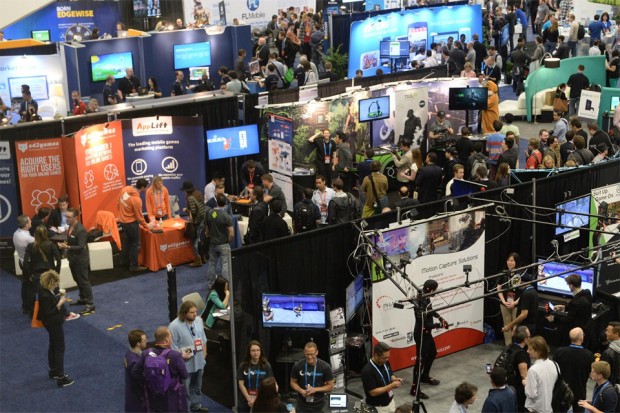The Game Developers Conference this year proved to be bigger and badder than ever. What started as an intimate gathering of U.S. game developers is now a mega-event, with more than 25,000 attendees and hundreds of huge booths filling every hall of the Moscone Center in San Francisco for the first week of March.
The three main circus rings were the presentations, the show floor and the career pavilion, in addition to specialized venues such as the independent games festival and showcases. There were many surprises, including the sharply increased participation by new European game companies and developers.
The presentations this year included more than 400 lectures, panels and tutorials about every gaming aspect under the sun, including how to make money with your mobile game, creating high-resolution characters for a console game, audio design, script writing, programming and success and failure stories from producers. Dozens of lecture halls were standing-room only with hundreds of eager-eyed listeners.
The show floor was mobbed, with long lines waiting to get into content presentations at Epic, Sony and Unity and other high-end booths. There were many surprises. Microsoft, not content to watch Nintendo attract indie game developers, is now also going after them with its Xbox One ID@Xbox developer outreach program.
Standouts included Shovel Knight with its hilarious Battletoads from Yacht Club Games; The Flame in the Flood (BioShock’s survival game); and Wasteland 2, a post-apocalyptic RPG that was Kickstarter-funded for about $3 million. Xbox boss Phil Spencer also announced the integration of Windows 10 and Xbox One, with cross-buy functionality, i.e., a developer can now create one and the same game across all three types of devices (PCs, Xbox One and tablets), and sell it via the Windows Store.
The recruitment area, called the career pavilion, was starkly different from years past, when it featured long rows of drab pipe-and-drape booths with job seekers lined up in front of them, clutching their portfolios.
This year, the area looked like the main show floor — it was expansive, with large, open booth areas that included barstool seats and tables, colorful giveaways, food and drink, and flat screens displaying company products. Recruiting was not just for artists or programmers, but for a wide range of skills — the recruitment list of one company, Gree International, had more than 50 categories of open jobs. Another company, Glu Mobile, had a long list of open positions at its San Francisco, Redwood City and Long Beach offices. Glu specializes in free-to-play mobile games, with hits that include Blood & Glory: Immortals, Racing Rivals and Deer Hunter. The company decided to switch from third-party producers to developing new projects in-house. One of its games, Kim Kardashian: Hollywood, generated more than $120 million in revenues in 2014, with $43 million in its starting three months — a remarkable track record for a free game. Kardashian features in-app purchases, such as a virtual house in Malibu that can be bought in the game for $10.




 Win a Funko X Lilo & Stitch Prize Pack!
Win a Funko X Lilo & Stitch Prize Pack!

